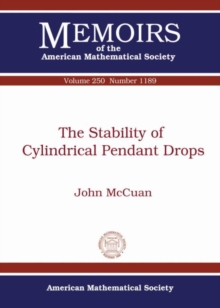
Estimating the Error of Numerical Solutions of Systems of Reaction-diffusion Equations Paperback / softback
Part of the Memoirs of the American Mathematical Society series
Paperback / softback
Description
This paper is concerned with the computational estimation of the error of numerical solutions of potentially degenerate reaction-diffusion equations.
The underlying motivation is a desire to compute accurate estimates as opposed to deriving inaccurate analytic upper bounds.
In this paper, we outline, analyze, and test an approach to obtain computational error estimates based on the introduction of the residual error of the numerical solution and in which the effects of the accumulation of errors are estimated computationally.
We begin by deriving an a posteriori relationship between the error of a numerical solution and its residual error using a variational argument.
This leads to the introduction of stability factors, which measure the sensitivity of solutions to various kinds of perturbations.Next, we perform some general analysis on the residual errors and stability factors to determine when they are defined and to bound their size.
Then we describe the practical use of the theory to estimate the errors of numerical solutions computationally.
Several key issues arise in the implementation that remain unresolved and we present partial results and numerical experiments about these points.
We use this approach to estimate the error of numerical solutions of nine standard reaction-diffusion models and make a systematic comparison of the time scale over which accurate numerical solutions can be computed for these problems.We also perform a numerical test of the accuracy and reliability of the computational error estimate using the bistable equation.
Finally, we apply the general theory to the class of problems that admit invariant regions for the solutions, which includes seven of the main examples.
Under this additional stability assumption, we obtain a convergence result in the form of an upper bound on the error from the a posteriori error estimate.
We conclude by discussing the preservation of invariant regions under discretization.
Information
-
Out of Stock - We are unable to provide an estimated availability date for this product
- Format:Paperback / softback
- Pages:109 pages
- Publisher:American Mathematical Society
- Publication Date:30/07/2000
- Category:
- ISBN:9780821820728
Other Formats
- PDF from £46.80
Information
-
Out of Stock - We are unable to provide an estimated availability date for this product
- Format:Paperback / softback
- Pages:109 pages
- Publisher:American Mathematical Society
- Publication Date:30/07/2000
- Category:
- ISBN:9780821820728










